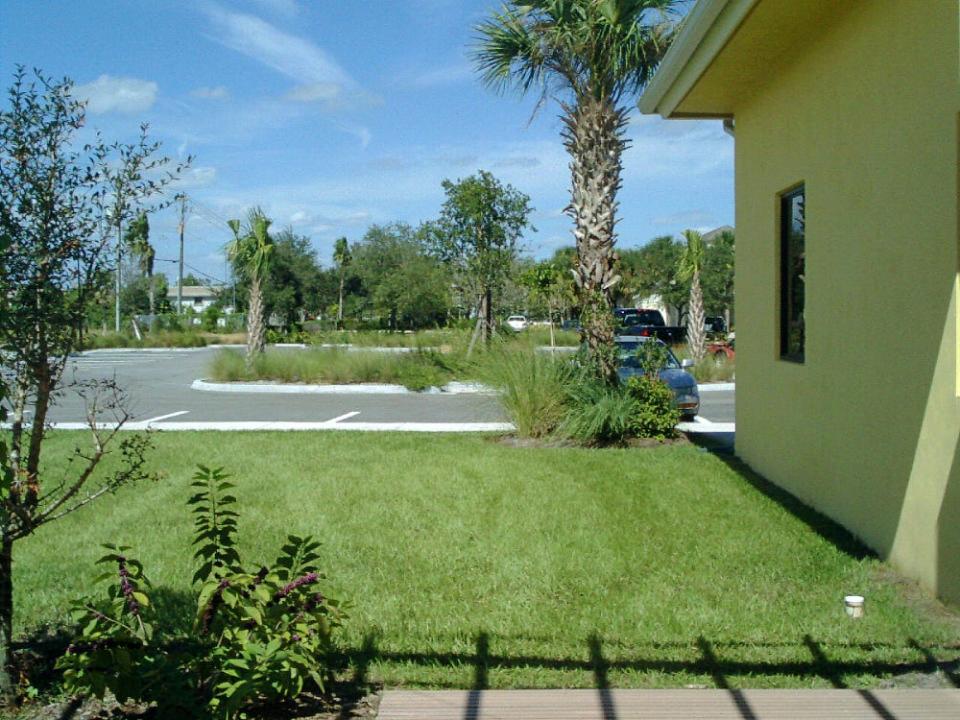UF report: Local summer fertilizer bans need comprehensive study to determine efficacy
Florida needs a thorough, years-long study to determine whether local fertilizer ordinances decrease water pollution that can feed algae blooms, according to a state-commissioned report released Thursday.
The Legislature paid $250,000 to the University of Florida's Institute of Food and Agricultural Sciences to evaluate the effectiveness of bans on using lawn fertilizer in the summer rainy season, when it can wash off into waterways.
To give UF/IFAS time to review the issue, the state banned local governments from enacting new fertilizer ordinances or making existing ones stricter to protect their waterways for one year. Environmentalists worry that algae blooms will increase if Florida replaces stricter local fertilizer ordinances with the state's weaker regulations.

"The assumption that residential fertilizer restrictions will reduce pollution to waterbodies andimprove water quality remains largely unclear," the UF/IFAS report says. "To fully understand the effect of fertilizer ordinances and other strategies to mitigate nutrient pollution and improve water quality, thorough study of the topic is required."
The only six studies that have measured nitrogen and phosphorus levels before and after fertilizer ordinances went into effect are inconclusive, according to researchers who detailed numerous technical shortcomings in their report.
"The few studies that have attempted to establish the effectiveness of ordinances have been generally limited to small or specific areas and analyzed the fertilizer restriction impacts in relatively short time scales (less than five years)," the report says.
A new and comprehensive study should include these parameters, according to the report:
Multiple watersheds to quantify the sources, transport and fate of nutrients, and how they affect downstream waters.
A range of urban watersheds across a larger area, which have diverse social, environmental and economic factors.
Water quality monitoring through manual field samples and continuous electronic equipment.
Pollution-source tracking through direct measurements and isotopic analysis as well as lab experiments.
"This research would need to be carried out for multiple years to account for known annual and decadal climate patterns, shifting regulatory environments, and demographic trends throughout our state," the reports says. "Results from this study would facilitate better decisions regarding future regulations and public funding to remediate this ongoing problem statewide."
Legislative 'sneak attack'
Scientists don't agree on how much fertilizers and other pollutants affect waterways, and which ones are worse — or if that matters. Some aren't sure they can even measure that accurately.
“It is important to note that existing studies ... are lacking,” Michael Dukes, director of the IFAS Center for Land Use Efficiency, which authored the report, told TCPalm in July.
But environmentalists are concerned about how the fertilizer moratorium and UF/IFAS report came about.
The TruGreen lawn care company hired lobbyist and former House Speaker Steve Crisafulli to push the fertilizer moratorium, according to nonprofit news site Florida Phoenix. Then the Legislature added it to the proposed budget on a Sunday night before the last week of the March-May session — without giving any notice or the chance for public input, said Friends of the Everglades Executive Director Eve Samples.
In a May 11 letter to Gov. Ron DeSantis, 55 environmental organizations implored him to veto the “sneak attack,” which he did not do.
“If he has any chance of claiming that he is for water quality, he blew it by not doing that because that's the one thing around the state that is not partisan,” Sierra Club spokesperson Cris Costello told TCPalm in July. She had been working with the Florida Springs Council to get more North Florida counties to enact fertilizer ordinances.
IFAS lobbyist Mary Ann Hooks dismissed critics' concerns about the reliability of a study conducted by researchers funded by the fertilizer and turfgrass industries.
“The source of money doesn't change the samples,” Hooks told TCPalm in July. “We’re Switzerland. We're not to answer the questions for the environmentalists or the homeowner or agriculture. Essentially, the numbers are the numbers.”
Florida fertilizer bans
Among the 35 counties that have fertilizer ordinances, 18 have summer bans, including the five counties containing the Indian River Lagoon: Martin, St. Lucie, Indian River, Brevard and Volusia. Most of the 32 counties that don't have ordinances are in the Panhandle, North Florida and around Lake Okeechobee, 33% of which is covered in a toxic algae bloom that will pollute the St. Lucie River and Indian River Lagoon if excess water is released east.
"That [IFAS] study will be used to try to unravel some of the existing fertilizer ordinances,” Samples told TCPalm in July. “There will be pressure from the fertilizer industry."
Florida's ordinance is “worthless,” Costello said, citing its lack of a summer ban. It only prohibits fertilizer use 24 hours before 2 inches of rainfall are forecast.
“The backbone of all urban fertilizer management is the rainy-season blackout period,” she said. “It is the cheapest, easiest way to stop urban pollution at the source.”
TCPalm reporter Katie Delk contributed to this report.
This article originally appeared on Treasure Coast Newspapers: UF report: Local summer fertilizer bans need comprehensive study

